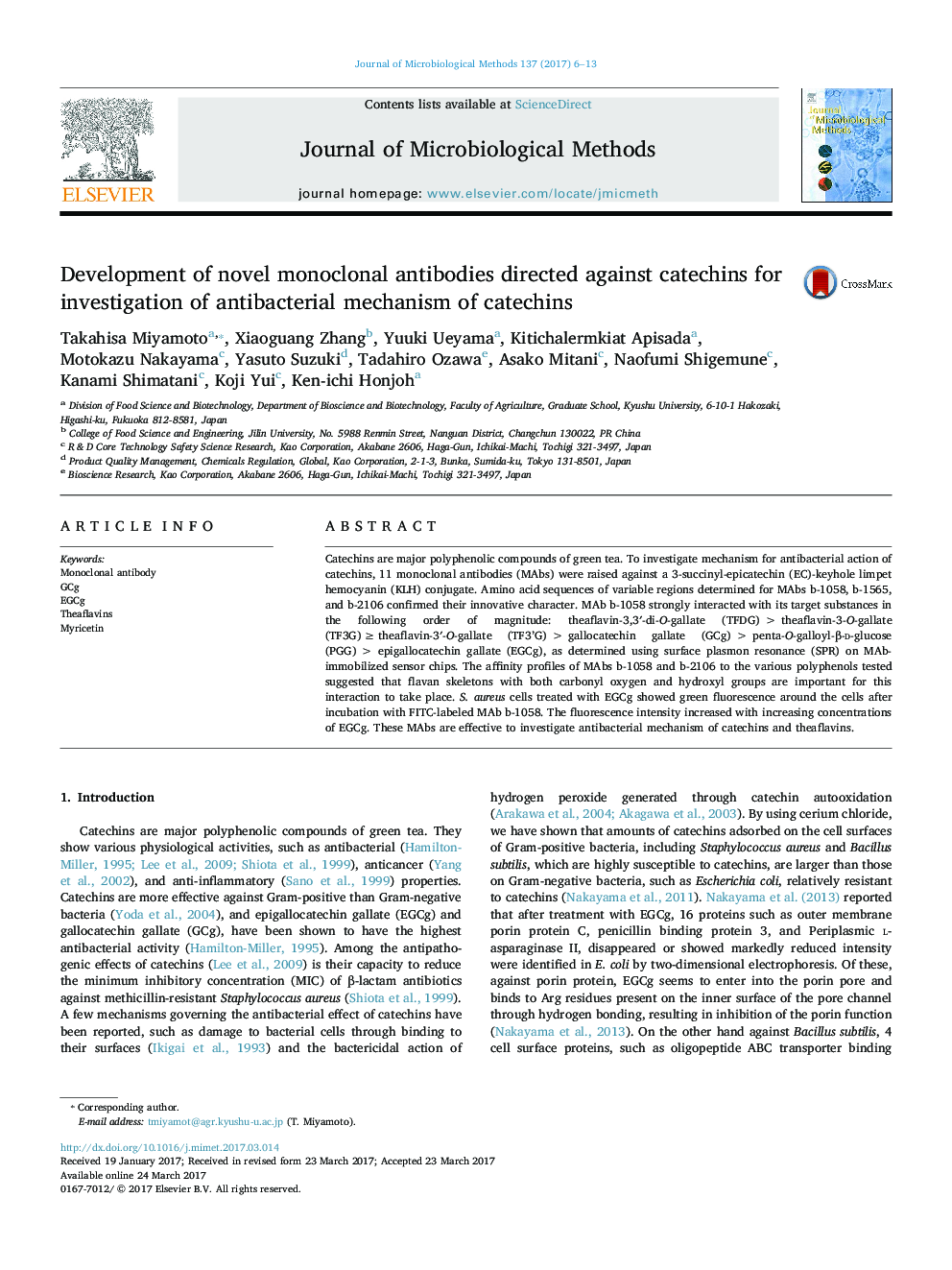| Article ID | Journal | Published Year | Pages | File Type |
|---|---|---|---|---|
| 5522310 | Journal of Microbiological Methods | 2017 | 8 Pages |
â¢11 MAbs were raised against a 3-succinyl-EC-KLH conjugate.â¢MAbs b-1058, b-1565, and b-2106 are novel.â¢MAbs b-1058 and b-2106 reacted with GCg, EGCg, theaflavins, and myricetin.â¢MAb b-1058 is available for the quantification and detection of EGCg.
Catechins are major polyphenolic compounds of green tea. To investigate mechanism for antibacterial action of catechins, 11 monoclonal antibodies (MAbs) were raised against a 3-succinyl-epicatechin (EC)-keyhole limpet hemocyanin (KLH) conjugate. Amino acid sequences of variable regions determined for MAbs b-1058, b-1565, and b-2106 confirmed their innovative character. MAb b-1058 strongly interacted with its target substances in the following order of magnitude: theaflavin-3,3â²-di-O-gallate (TFDG) > theaflavin-3-O-gallate (TF3G) â¥Â theaflavin-3â²-O-gallate (TF3'G) > gallocatechin gallate (GCg) > penta-O-galloyl-β-d-glucose (PGG) > epigallocatechin gallate (EGCg), as determined using surface plasmon resonance (SPR) on MAb-immobilized sensor chips. The affinity profiles of MAbs b-1058 and b-2106 to the various polyphenols tested suggested that flavan skeletons with both carbonyl oxygen and hydroxyl groups are important for this interaction to take place. S. aureus cells treated with EGCg showed green fluorescence around the cells after incubation with FITC-labeled MAb b-1058. The fluorescence intensity increased with increasing concentrations of EGCg. These MAbs are effective to investigate antibacterial mechanism of catechins and theaflavins.
